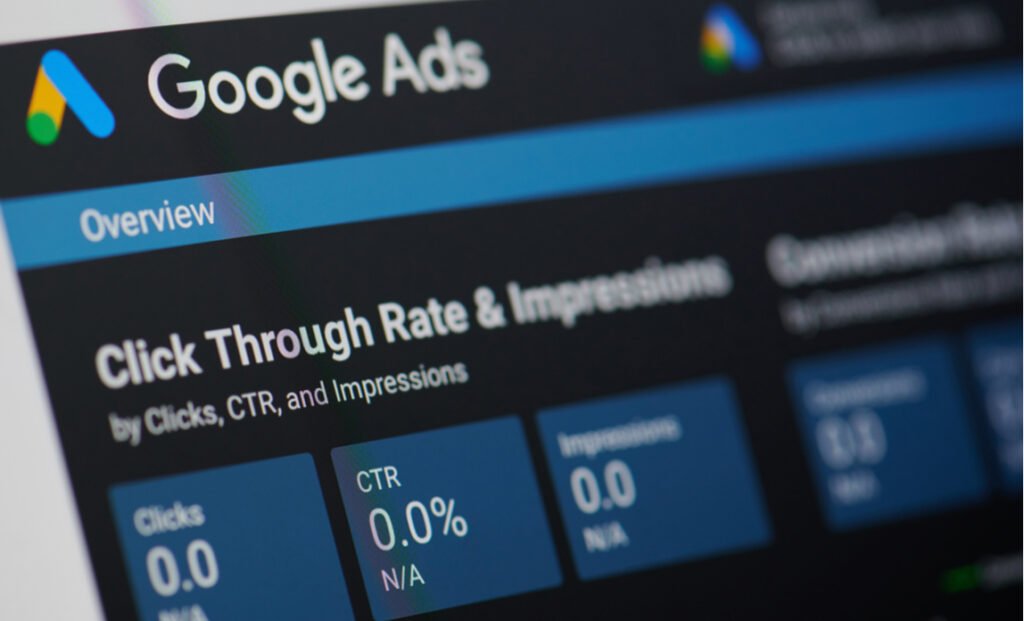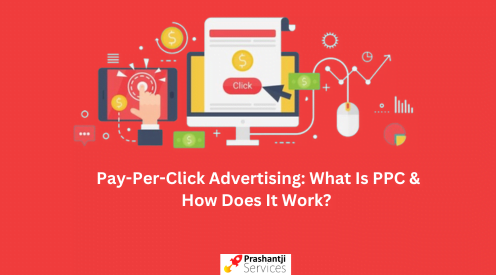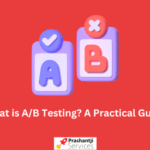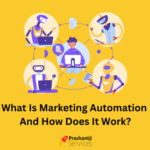In today’s digital-first world, pay-per-click advertising stands as a beacon for businesses aiming to thrive online. As a fundamental component of digital marketing, PPC advertising provides an efficient way to channel traffic directly to your website. Whether you are a burgeoning startup or an established enterprise, understanding what is pay per click advertising can significantly amplify your marketing efforts. This guide aims to dissect the nuances of pay-per-click advertising, explaining not just how it works but also how it can be strategically implemented to maximize your digital footprint.
Understanding Pay-Per-Click Advertising

Pay-Per-Click Advertising is essential for any marketer aiming to drive targeted traffic to their website efficiently. PPC advertising works on the straightforward yet effective idea that you only have to pay when someone clicks on your advertisement.This model ensures that your marketing budget is spent effectively by targeting only those who are interested in your product or service. With pay-per-click ads, advertisers can swiftly attract visitors and measure the immediate impact of their campaigns. Whether you’re running a pay per click campaign or exploring what is pay per click advertising, mastering PPC is crucial for achieving digital marketing success in today’s competitive landscape.
How Does Pay-Per-Click Advertising Work?
Understanding how pay-per-click advertising works is crucial for any digital marketer looking to enhance visibility and profitability through pay-per-click campaigns. Pay-per-click advertising, or PPC, is a model where marketers only pay when their ad is clicked, not merely when it’s viewed. This performance-based advertising framework maximizes budget efficiency and directly drives traffic to websites. Let’s delve into the mechanics of pay-per-click advertising and discover how it can transform clicks into significant business value. Here’s a step-by-step breakdown of how pay-per-click advertising works:
Step 1: Keyword Research
Before launching a pay-per-click campaign, it’s essential to conduct thorough keyword research. Finding the keywords that prospective clients use to look for goods or services comparable to yours is the task of this phase. Keywords such as what is pay per click advertising, pay per click in digital marketing, and PPC advertising are vital as they form the foundation of your ads. Effective keyword research ensures that your PPC ads appear in front of the right audience, maximizing both clicks and conversions.
Step 2: Setting Up the Campaign
Once you have your keywords, the next step is to set up your pay-per-click campaign. This involves creating ad groups that consist of related keywords and developing ad copy that is relevant to these keywords. Ads should be compelling and include a clear call to action. Whether you’re focusing on pay per click ads or more specific queries like pay per click campaign strategies, each ad group should be tightly themed to address the search intents associated with the keywords it contains.
Step 3: Bidding and Budget Management
Pay-per-click advertising operates on a bidding system, where you set the maximum amount you’re willing to pay each time someone clicks on your ad. This can be managed through manual bidding or automated bidding strategies designed to optimize your budget. PPC campaigns allow you to control costs by setting daily or monthly budgets, ensuring that you never spend more than you plan. Effective budget management helps maximize ROI from your pay per click advertising efforts.
Step 4: Launching the Ads
After setting up your campaign and bids, your ads are ready to be launched. Once live, they will appear in the ad spaces of search engines or on social media platforms, depending on the network you are using. The placement is typically determined by the relevance of your keywords to the user’s search query and the competitiveness of your bids compared to others bidding on the same keywords.
Step 5: Monitoring and Optimization
The final step in a successful pay-per-click advertising strategy is ongoing monitoring and optimization. Regularly check the performance of your pay per click ads using metrics like click-through rate (CTR) and conversion rate. This data can provide insights into what’s working and what’s not. Make adjustments to improve ad performance, such as tweaking the ad copy, adjusting bids, or refining the landing pages. Optimization is an ongoing process that helps improve the effectiveness of your PPC campaigns over time.
Why PPC is important ?

Pay-per-click (PPC) advertising is an essential component of digital marketing strategies for several compelling reasons. Here’s why PPC is important, outlined in key points:
- Immediate Visibility: PPC provides instant traffic by placing your pay-per-click ads at the top of search engine results, bypassing the time-consuming process of organic SEO. This immediate visibility is crucial for new products or businesses seeking quick exposure.
- Targeted Audience: With pay-per-click advertising, you can target your audience with precision based on demographics, location, language, and even browsing behavior. This level of targeting ensures that your PPC ads reach those who are most likely to be interested in your products or services.
- Measurable Results: One of the biggest advantages of PPC is the ability to measure every aspect of your campaign. From the number of clicks to the cost per conversion, pay-per-click advertising provides actionable data that helps in making informed decisions.
- High Conversion Potential: PPC ads are not just about clicks; they drive actionable traffic. By targeting specific pay per click ads to your audience, you can increase your chances of converting interest into sales, making PPC a valuable tool for achieving business goals.
- Flexible Strategies: The versatility of PPC advertising allows for a range of strategies, including pay per click campaign testing and pay by click advertising adjustments in real-time based on what’s effective. This flexibility helps optimize campaigns continuously.
- Cost Control: PPC campaigns offer full control over your budget. You can decide exactly how much you want to spend daily or per ad, and you only pay when someone clicks your pay-per-click ads, making it a cost-effective way to drive traffic.
Challenges and Considerations
Navigating the intricacies of pay-per-click advertising presents several challenges and considerations that need strategic foresight and ongoing attention. Here are some key points to consider when managing and optimizing your PPC campaigns:
1. Keyword Competition
High competition for popular keywords can drive up costs, particularly in lucrative industries. Pay-per-click campaigns targeting highly competitive keywords like what is pay per click advertising and pay per click ads require careful budgeting and strategic bidding to remain cost-effective.
2. Quality Score Maintenance
Google’s Quality Score influences your ad position and the cost per click. Maintaining a high Quality Score involves optimizing your pay-per-click ads, landing pages, and overall PPC campaigns. This can be a continuous challenge as standards and algorithms evolve.
3. Click Fraud
One of the pitfalls in pay-per-click advertising is click fraud, where bots or competitors generate false clicks on your ads, draining your budget. Monitoring and protecting against click fraud is crucial to ensure the cost-effectiveness of your pay-per-click campaigns.
4. Changing Market Trends
The digital market is volatile, with user behaviors and competitor strategies constantly evolving. Advertisers must stay informed and adaptable, continuously tweaking their pay-per-click campaigns to align with current trends and technologies.
5. Landing Page Optimization
The effectiveness of your PPC ads hinges on the quality of your landing pages. These pages must be highly relevant, load quickly, and be optimized for conversions, which often involves regular updates and tests.
FAQs
Q1. How do I choose the right keywords for my PPC ads?
Ans. Choosing the right keywords involves understanding your audience’s search habits and the competitive landscape. Tools like Google Keyword Planner can help identify effective keywords, including long tail keywords, that can drive targeted traffic to your site.
Q2. What is a good budget to start with for PPC advertising?
Ans. The ideal budget for PPC advertising depends on your industry, competition, and objectives. Starting with a modest budget and gradually increasing based on performance is a prudent approach.
Q3. What are some common mistakes to avoid in PPC advertising?
Ans. Common mistakes include neglecting keyword research, ignoring the optimization of landing pages, failing to test different ad elements, and not adjusting bids based on performance data.
Q4. How often should I review and adjust my PPC campaigns?
Ans. Regularly reviewing and adjusting your pay-per-click campaigns is crucial. Best practices suggest at least a monthly review to analyze performance, with adjustments made as needed to improve results.
Q5. How can I improve my PPC ad’s click-through rate (CTR)?
Ans. Improving CTR can be achieved by creating relevant and enticing ad copy, using strong calls-to-action (CTAs), optimizing your ad placement, and continually testing different elements of your ads.
Conclusion
Navigating the complexities of pay-per-click advertising can be daunting, yet the rewards justify the endeavor. By integrating a strong pay-per-click campaign strategy, businesses can see immediate improvements in traffic, conversion rates, and ultimately, revenue. As we’ve explored, whether through selecting precise pay per click ads, optimizing landing pages, or refining bidding strategies, each element of PPC plays a critical role in your overall digital strategy. For agencies like Prashantji Services in Delhi, the ability to master and leverage pay-per-click advertising can set you apart from competitors, ensuring that your brand not only remains visible but also thrives in the competitive digital marketplace. Implement these insights into your pay-per-click campaigns to transform clicks into valuable customer engagements, driving both growth and success for your business.








